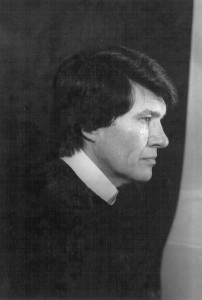
We have passed the midpoint in this fall semester at LSUA. Students in my studio film photography class are busy with projects that they will exhibit in the University Gallery. The exhibit opens on November 27th.
Film photography is a varied medium of creating fine art photographs in which the photographer stops a moment in time and captures the image, in all of the detail that the camera affords, for posterity. There are a number of methods and ways by which this can be done. In a studio class, we are not limited to black and white and/or color film that is developed on paper by traditional means. We have the freedom to experiment with the image, to alter the image, and to provide a creative way of looking at that image.
Our first project involved the techniques of photographer Man Ray. Emmanuel Radnitsky, known professionally as Man Ray, created cameraless photographs, images that he called “rayographs”. Objects are placed on or near sensitized paper and exposed directly to light. The objects are then moved or removed while controlling the exposure. The result produces images of abstract or symbolic character. My students have explored Man Ray’s technique, creating their own rayographs.
We have worked with cyanotype technique to create a type of blueprint. We treated water color paper with appropriate chemicals such as ferric (iron) salts, resulting in a Prussian blue tinted paper, similar to the architectural blue print. Transparencies were then made of the photographs, both of positive and negative images. The final step of placing these transparencies on the cyanotype treated paper results in a blue line print. The process of creating a cyanotype photograph is basically that the photosensitivity of the ferric salts, reduced by light to a ferrous state, can combine with other salts to create an image. Cyanotype technique was used as early as the 1840’s by photographer Anna Atkins. Atkins brought this procedure from a scientific process to fine arts photography. The process was simple. Atkins placed the chemical solution directly onto the surface of the paper and dried it in a dark location. The image was then placed on the cyanotype paper and exposed to sunlight. The students have used this process to create their blue line drawings.
Subject matter has been a strong consideration in the class. Students are required to photograph various images to reflect subjects such as action, emotion, nature, animal, portrait and architecture. Evaluation is based on craftsmanship, balance, contrast and appropriateness of the image to the subject. The eye of the photographer is looking at the scene with all of the mental and emotional trappings of that personality. By learning to develop the photographs, the students are not dependent on film labs who often mess up the final print simply because they have not seen what the photographer has seen.
Hand coloring is another area that is explored in the class. We use Marshall oil paints to spot color images or create full color photographs. The technique of hand coloring was brought to prominence during the Civil War in the U.S. when photographers brought their black and white images into vivid color through the use of oils to hand color images. There is an art to learning what to color and what to leave in its original black and white. Often, it is a pure trial and error process. Hand coloring the proper part of the image can enhance the overall photograph, giving it life and energy.
Our final process is that of pinhole photography. Pinhole technique is one of the most ancient photographic processes, used long before the advent of the camera. As early as 1021 BCE, Persian scientist Alhazen (Ibn al-Haytham) wrote about the pinhole concept in his Book of Optics. Even Aristotle understood the concept of the camera obscura, or pinhole technique. Both east and west explored the use of pinhole to create images. Leonardo wrote of the camera obscura in his Codex Atlanticus. And in 1850, Scottish scientist Sir David Brewster took the first camera photograph using pinhole technique.
Pinhole technique requires a light-proof box with a small hole in one side. Light passes through the hole and projects an inverted image on the opposite side of the box. The smaller the hole the sharper the image, but of course making it dimmer. In ancient times, pinhole technique was used to capture the movement of the sun over long periods of time, known as solargraphy. A pinhole camera can be bought or made from everyday materials and my students have enjoyed exploring this medium.
Our exhibit at the University Gallery is the culmination of this semester’s study of film photography. The varied techniques can be seen as each student displays their best work. Again, the show will open on November 27th in the University Gallery, located in the Student Union Building on the LSUA campus. We invite all to visit us and see this fine exhibit. For more information, please call me at (318) 473-6449.









